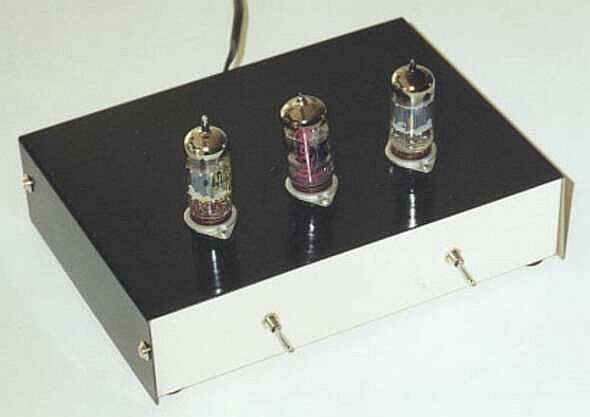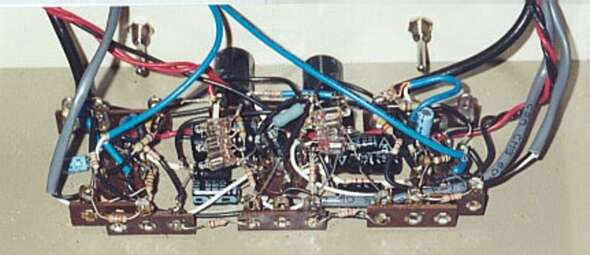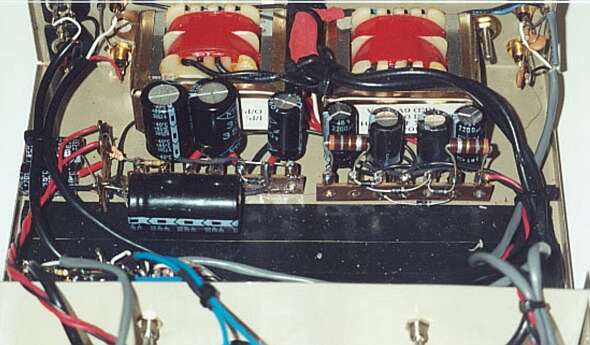





| Plate V1A (bottom of R106/R206) | 190-210 V |
| Plate V1B (bottom of R107/R207) | 270-290 V |
| Cathodes V1 (top of R104/R204) | 26-32 V |
| Grid supply V1A (top of C102/C202) | 1.5 V less than cathodes |
| Grid supply V1B (ACG) | 2V less than cathodes |
| Grid V2 (R115/R215) | same as Plate V1A |
| Cathode V2 (top of R108/R208) | 1.5V higher than Grid V2 |
| Plate V2 (OUT) | 290-310 V |
| +IN (top of R101/R201), Outputs | 0V |
| Filaments | +6.3 V (pins 4), =6.3V (pins 5) |
 |
 |
 |
BACK | INDEX | NEXT |